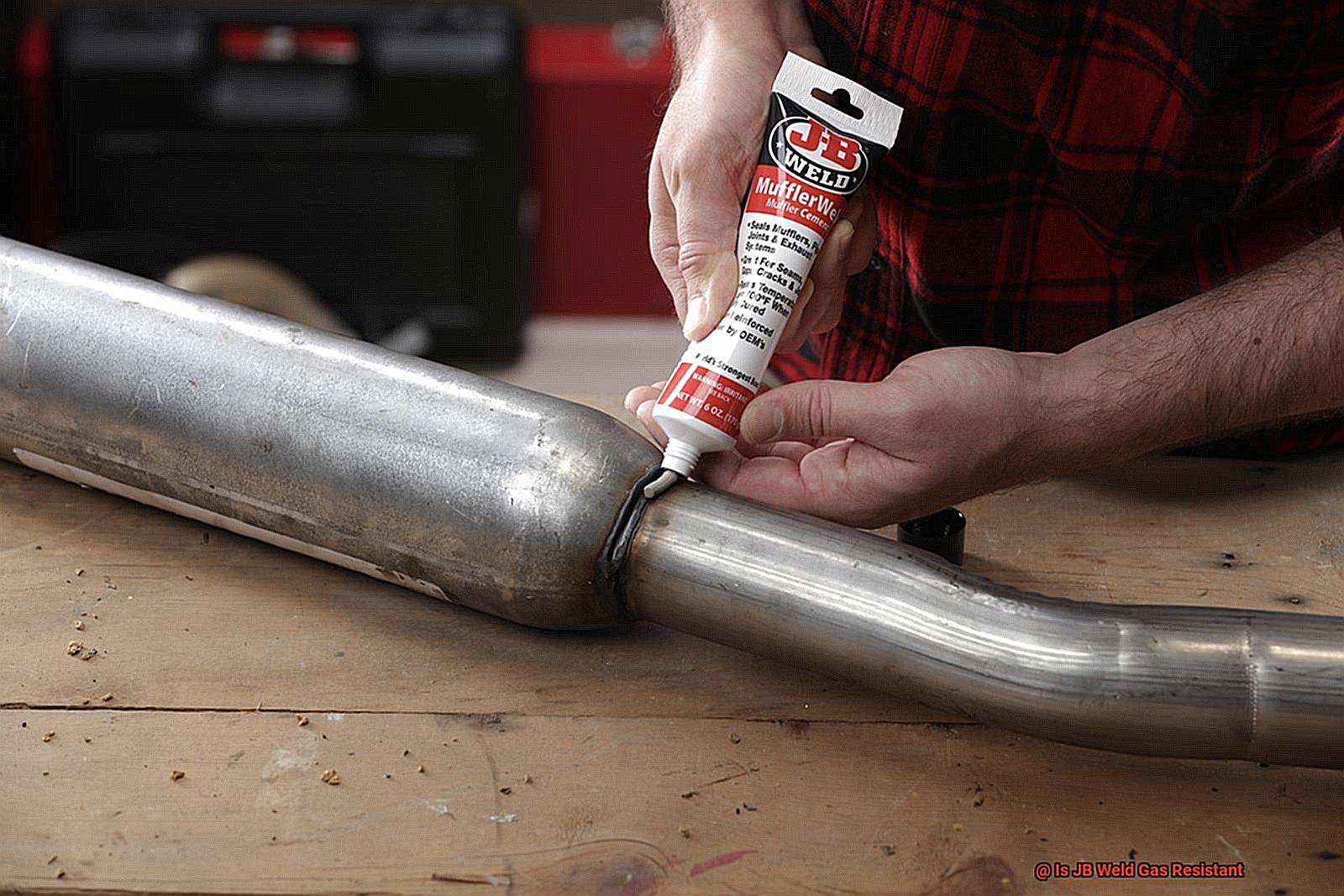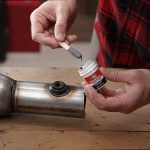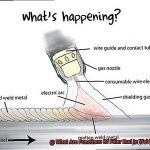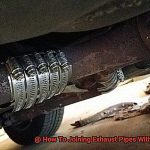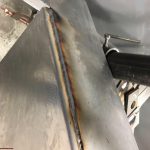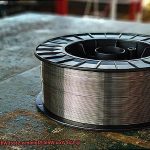Got a broken piece of metal or plastic that needs fixing? Look no further than JB Weld. This industrial-strength adhesive has saved the day for countless DIY-ers and repair enthusiasts. But there’s a catch – not all surfaces are created equal when it comes to JB Weld’s sticking power.
In this blog post, we’ll delve into the world of JB Weld and explore which materials it won’t adhere to. From rubber to plastic, certain surfaces just won’t bond with this miracle glue. But why is that? What gives JB Weld its incredible sticking power on some surfaces but leaves it ineffective on others? We’ll answer these questions and more as we dive deep into the science of adhesives.
Whether you’re a seasoned DIY-er or just need a quick fix around the house, knowing what JB Weld won’t stick to can save you time, money, and headaches in the long run. So grab your welding gloves and join us as we explore the fascinating answer to the question “what will JB Weld not stick to?”
What is JB Weld?
Contents
Meet JB Weld, the two-part epoxy adhesive that has become a household name for its reliability and durability.
First invented in 1969 by Sam and Mary Bonham, JB Weld has been used in a variety of industries, from automotive to marine to manufacturing. This versatile adhesive is renowned for its unique ability to bond different materials such as metal, wood, plastic, ceramic, and concrete. So whether you’re fixing a broken vase or building a custom car part, JB Weld is the go-to choice.
But what really sets JB Weld apart from other adhesives on the market is its strength and resilience. This adhesive can withstand high temperatures up to 550 degrees Fahrenheit, making it ideal for high-performance applications. And once it cures – which takes 15-24 hours depending on the temperature and humidity of the environment – it can be sanded or machined to fit your exact needs.
While JB Weld is a reliable and effective adhesive, it’s important to note that there are some limitations to what materials it can bond to. Materials like polyethylene or polypropylene plastics and Teflon or PTFE have low surface energy which makes it difficult for adhesives to bond to them. So make sure you know these limitations before starting your project.
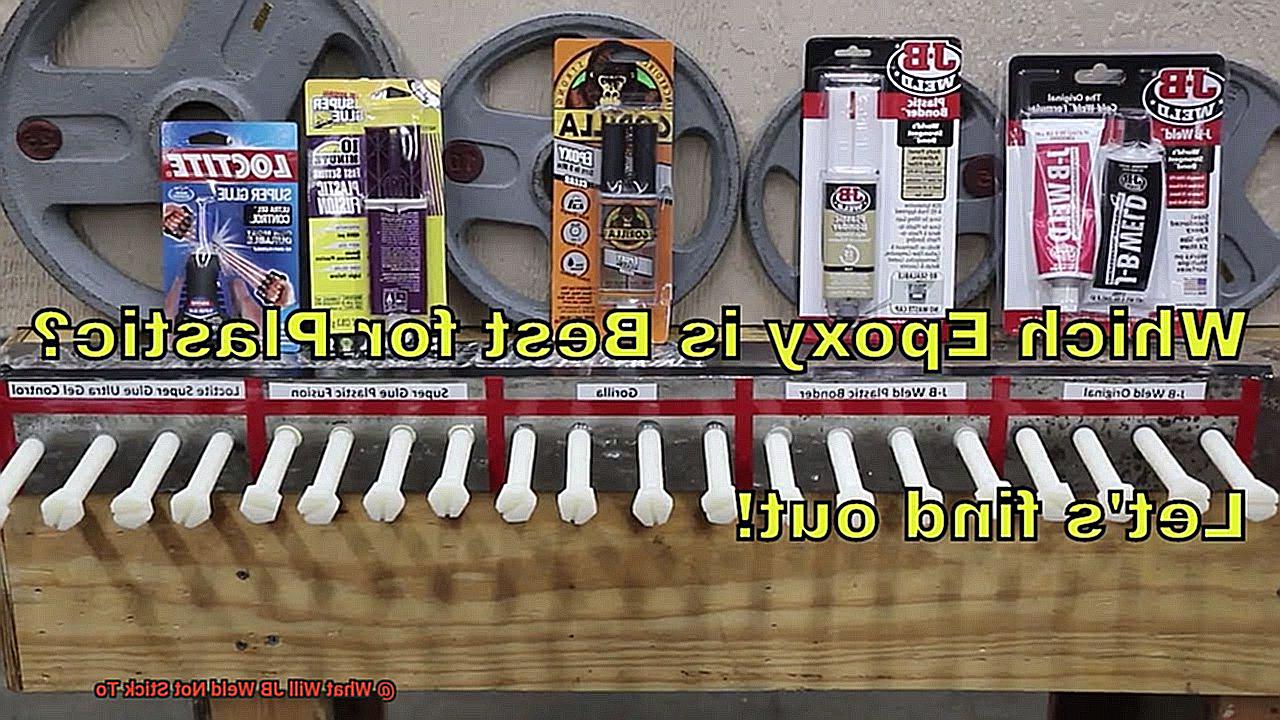
To ensure optimal bonding, start by cleaning surfaces so they’re free of any residue before applying JB Weld. Once mixed together in equal parts, the adhesive sets in 4-6 hours, giving you plenty of time to make adjustments before it fully cures.
Overall, JB Weld is a versatile and reliable adhesive that has earned a place in both professional and DIY toolkits alike.
What Materials Will JB Weld Not Stick To?
While this two-part epoxy adhesive can bond almost any material with unparalleled strength and resilience, there are a few materials that may pose a challenge.
One material that JB Weld may not adhere well to is polypropylene and polyethylene plastics. These plastics have a low surface energy that makes it difficult for adhesives to bond with them. Similarly, some types of rubber may also be difficult to bond with JB Weld due to their low surface energy.
Teflon, with its non-stick coating, also poses a challenge for JB Weld. It repels most adhesives, including JB Weld. But don’t worry, you can still bond Teflon by roughening the surface first with sandpaper or using a Teflon-specific primer.
JB Weld may also have difficulty bonding with certain types of metals, such as copper and aluminum. These metals are highly conductive and can dissipate the heat generated during the curing process of JB Weld. To ensure a strong bond with these metals, it is recommended to thoroughly clean them with a degreaser and roughen the surface with sandpaper before applying JB Weld.
Lastly, oily or greasy surfaces may inhibit adhesion of JB Weld. Be sure to clean the surface thoroughly with a degreaser before applying JB Weld.
Polyethylene and Polypropylene Plastics
Polyethylene and polypropylene plastics are the superheroes of the material world, thanks to their durability, flexibility, and resistance to chemicals. However, bonding them with JB Weld can be a challenge as they are non-stick surfaces. But fret not, with proper surface preparation, you can create a rock-solid bond between JB Weld and these plastics.
The first thing to note is that JB Weld will not stick to these plastics without proper surface preparation. To prepare the surface of these non-stick plastics, you can use a plastic adhesive primer or a special surface preparation technique like flame treatment.
Flame treatment is a popular method for preparing the surface of polyethylene and polypropylene plastics. It involves passing a flame over the surface of the plastic briefly, increasing its surface energy. This process roughens the surface, allowing JB Weld to bond more effectively. However, caution is crucial during this process as overheating or prolonged exposure to the flame can damage the plastic.
Another effective method for preparing these surfaces is by using an adhesion promoter specifically designed for polyethylene and polypropylene plastics. These primers chemically alter the surface of the plastic, creating a receptive surface for JB Weld to bond. When using these primers, it’s important to follow the manufacturer’s instructions carefully.
Teflon and PTFE
Teflon and PTFE are renowned for their non-stick properties, with excellent resistance to heat, chemicals, and abrasion, making them a popular choice for cookware and industrial applications. However, their low surface energy makes it challenging to bond them with other materials.
JB Weld is a powerful adhesive that can bond various materials together. However, it cannot stick to Teflon or PTFE due to their low surface energy. Luckily, there are specialized adhesives designed explicitly for bonding Teflon and PTFE surfaces. These adhesives contain a primer or activator that increases the surface energy of Teflon or PTFE, allowing the adhesive to form a stronger bond.
Dirty or Residue-Covered Surfaces
If you want to achieve a strong and reliable bond when using JB Weld, surface preparation is absolutely key. And that means making sure your surface is clean and free from any residue or dirt.
But why is this so important? Well, JB Weld is specifically designed to bond with clean, bare metal surfaces. Even the tiniest speck of contamination can prevent the adhesive from forming a strong connection. And while your surface may look clean to the naked eye, there could be invisible oils, grime, or other residues lurking on the surface that can interfere with the bonding process.
To avoid weak bonds or even complete failure, it’s essential to take the time to thoroughly clean and prepare your surface before application. This might involve using a degreaser or solvent to remove any oils or residues, as well as sanding or roughening the surface to help create a better bond.
It’s also worth bearing in mind that JB Weld may not stick to certain materials – such as some plastics, rubber, and silicone – so it’s always best to test a small area first before attempting a full bond.
WAkkTyrkF38″ >
Conclusion
In conclusion, JB Weld is a force to be reckoned with when it comes to adhesive strength and durability. However, it’s important to understand its limitations when bonding specific materials. JB Weld may not adhere well to polyethylene or polypropylene plastics, certain rubbers, Teflon or PTFE, and some metals such as copper and aluminum. Additionally, oily or greasy surfaces can hinder adhesion.
To achieve the best results with JB Weld, surface preparation is key. This may involve using a degreaser or solvent to eliminate any oils or residues and roughening the surface through sanding. Flame treatment is also an effective method for preparing non-stick plastic surfaces like polyethylene and polypropylene.
When working with Teflon or PTFE surfaces, specialized adhesives designed explicitly for bonding these low surface energy materials are essential.
